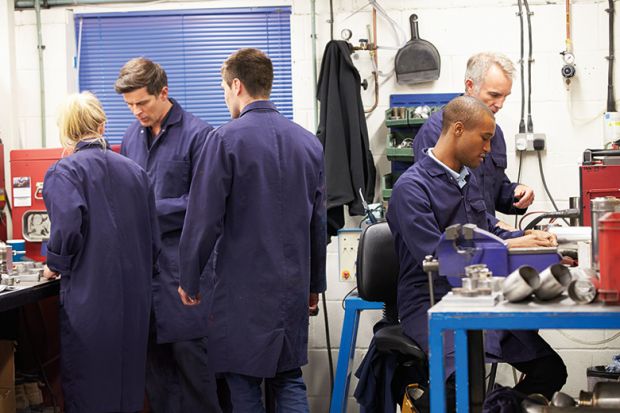With all their wealth, prestige and history, America’s top universities still lead a sector struggling to expand success for lower-income and ethnic minority students, or to provide their graduates with career-ready skills.
That was the assessment of speakers at the Times Higher Education US Student Success Forum, held to coincide with the launch of the Wall Street Journal/THE US College Rankings 2018.
The warm glow of celebration was pierced by grim assessments about the magnitude of challenges confronting US higher education institutions. Among other problems, men are enrolling at falling rates, women forgoing technology fields, and American students of both genders faring especially poorly in the sciences.
Despite huge strides in the proportion of young people who aspire to post-secondary credentials, meanwhile, only slightly more than half actually get one within a reasonable period. Those outcomes are especially poor for non-white students with low socioeconomic status.
“The fact is that if one is in that bottom quarter, across races, economically, we’re still talking under a 10 to 15 per cent probability of getting a degree in six years,” said the forum’s keynote speaker, Freeman Hrabowski III, president of the University of Maryland, Baltimore County (UMBC).
“We should stop saying it’s all about the deficiencies of our students. It’s a lot about the culture of our institutions,” said Dr Hrabowski, a one-time civil rights leader widely lauded for innovations that have propelled the largely non-white students at his 54-year-old university to higher-than-average graduation rates in fields such as engineering.
The nine private institutions at the top of the WSJ/THE US rankings – including Harvard and Stanford universities – have combined endowment wealth of more than $150 billion (£112 billion) and attract the best students in America. But Rob Curtin, Microsoft's director for higher education, said that institutions such as the public UMBC (endowment $81 million, ranked 357th) have the toughest job.
“I would love these rankings to put UMBC as the best institution in the world, because it makes the best wine from pretty good grapes,” said Mr Curtin.
Among other things, said Mr Curtin, some universities’ complacency leaves them clueless about whether or not they are adequately preparing graduates for careers. In a Gallup poll, 96 per cent of chief academic officers said that they were, but only 11 per cent of employers agreed.
So serious has this disconnect become, he said, that Microsoft and other technology giants are taking matters into their own hands and working with partners including the online platform EdX to develop their own education programmes for data scientists and other workers in acute demand.
Whether institutions are preparing students for the workplace is, among other questions, “a space for us to self-reflect”, said Bridget Burns, executive director of a collaboration among 11 major public universities called the University Innovation Alliance.
“We need to learn from this. We know we’re not great at it. The only way we’re going to solve this is to band together,” Dr Burns said. Instead, she said, universities do “too much polishing up and presenting everything as if it’s perfect…This is not a place to get super-defensive and shut down and say everything’s perfect.”
After all, said Dr Burns, it’s not just employers who have come to doubt the value of a post-secondary education. Only 43 per cent of Americans surveyed by the foundation New America believed that private, non-profit universities were worth the cost and 58 per cent thought that institutions put their own interests ahead of those of students, while only a quarter thought that the US higher education system was working well.
“There’s this building narrative about the value of a college degree,” Dr Burns said. “What we actually need is for higher education to get on the same page, come together and make a decision about how we’re going to respond collectively. We need to take up the task of defending the value of what this is.”
Dr Hrabowski suggested rethinking how higher education is delivered. While other institutions stick rigidly to conventional lectures, he said, UMBC has reconsidered how it teaches physics, chemistry and other particularly challenging subjects, using models including online tutoring and flipped classrooms.
“We need to think about how we are recognising, supporting, empowering students,” he said. “It’s about changing attitudes and values.”
Among other things, UMBC convenes focus groups of its students. “We assume we know our students,” said Dr Hrabowski. “I would argue rarely do we know our students…It’s only when people feel honest enough and comfortable to say, for example, people are bored in this class – it’s the sticky questions that can help us make progress.”




